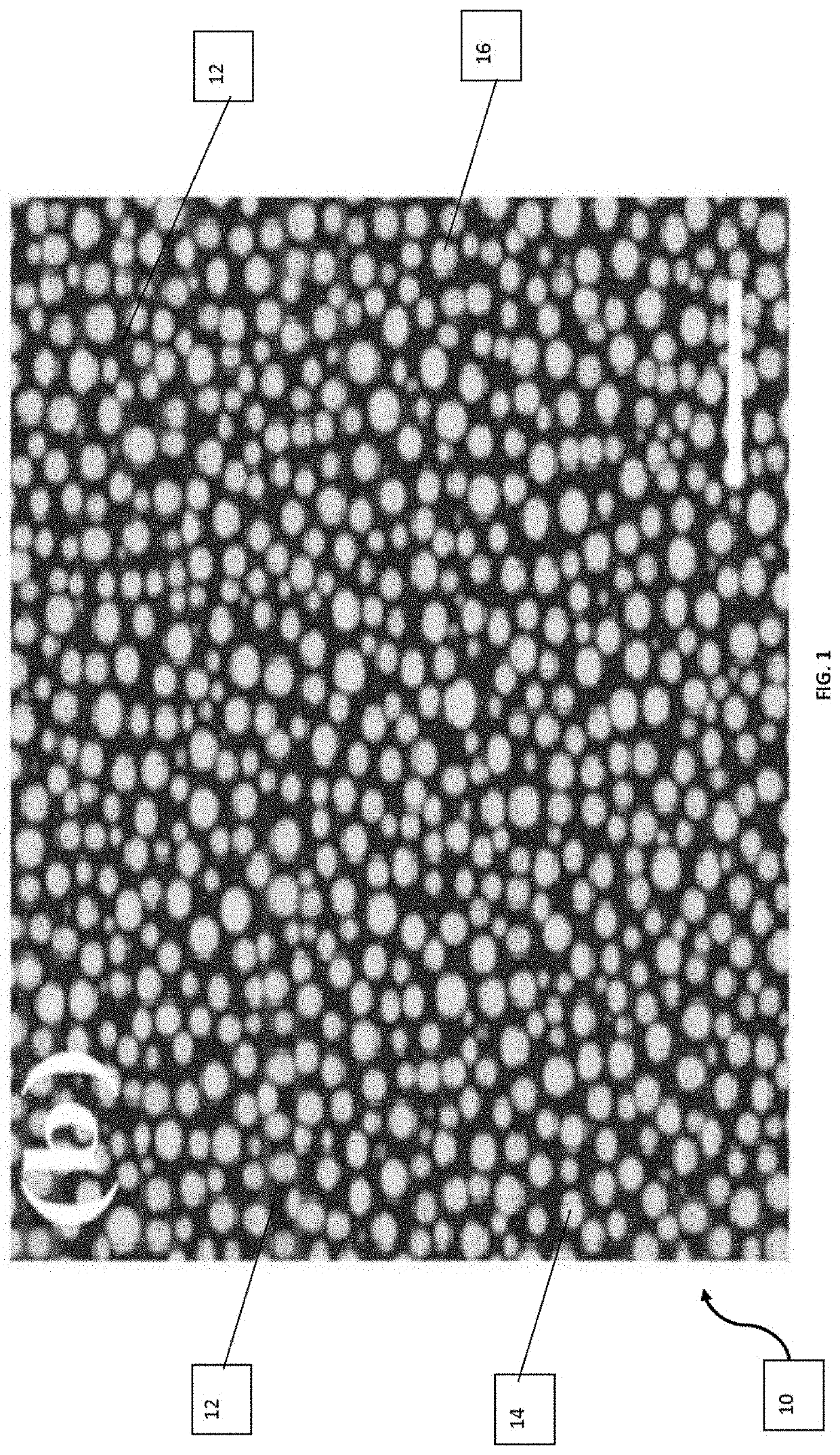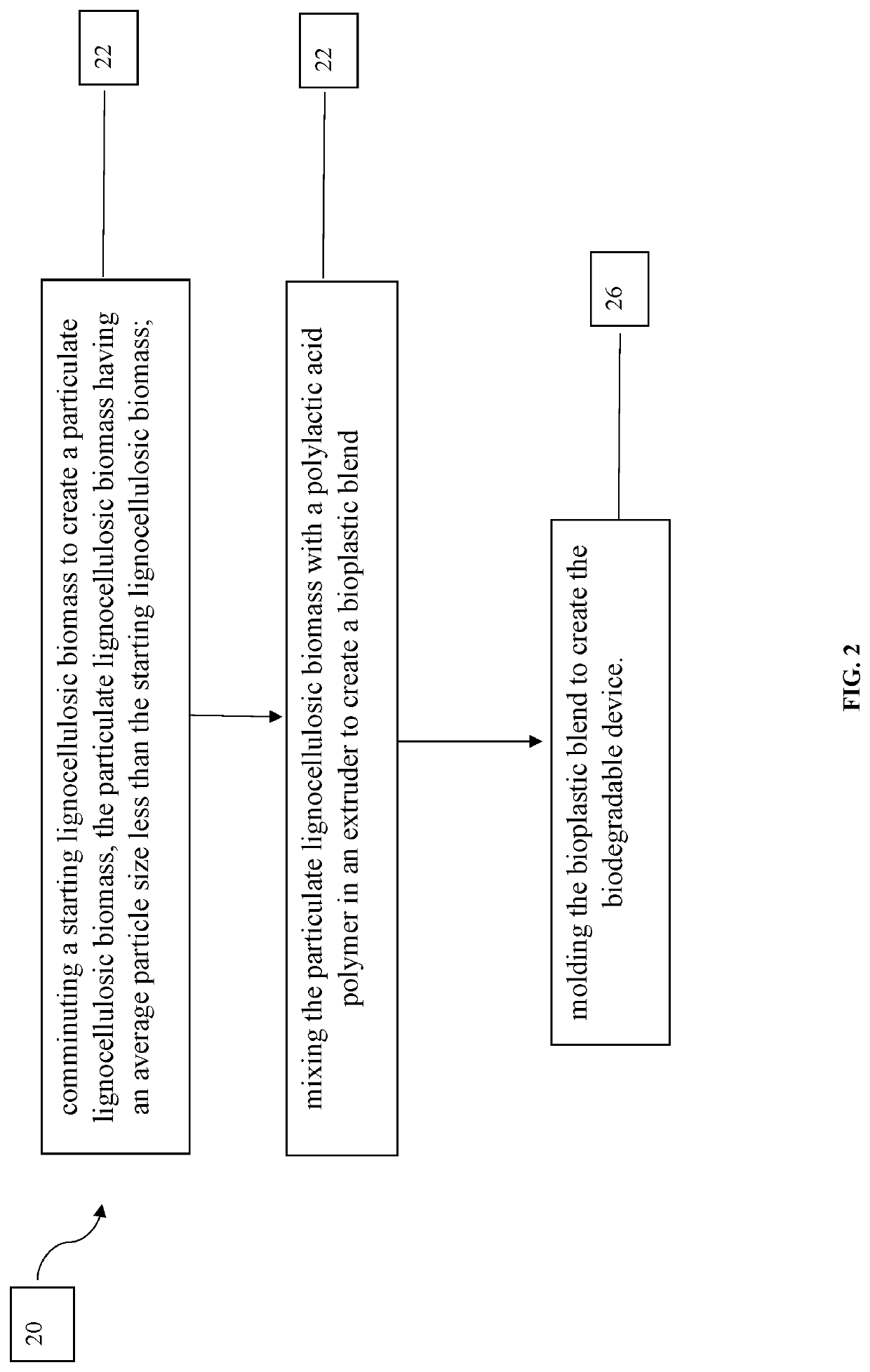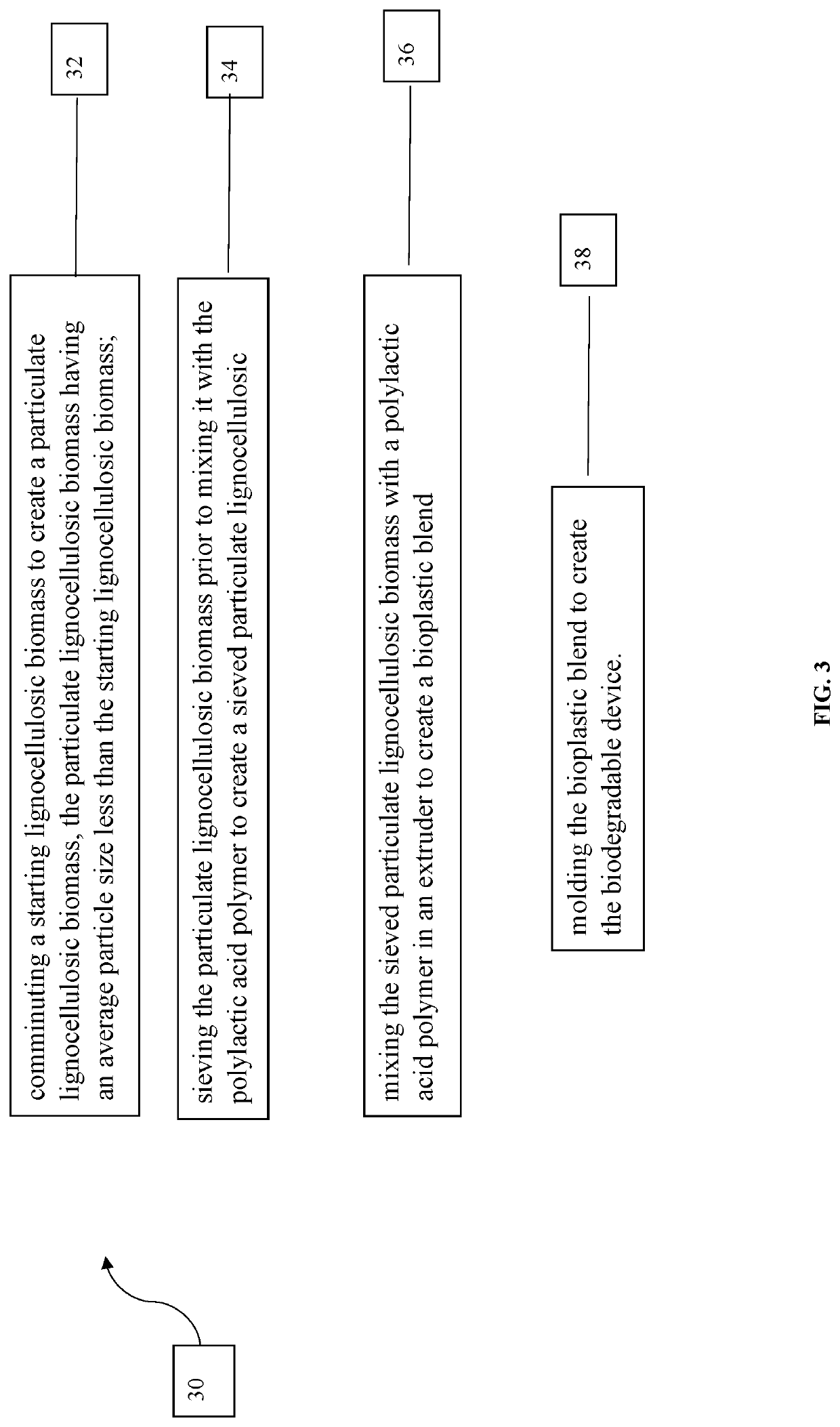Biodegradgradable devices, and methods of making the same
a technology of biodegradable devices and biodegradable materials, applied in the field of biodegradable devices, can solve the problems of long breakdown time, considered non-biodegradable, and plastics based on polymers derived from petroleum sources may pose a serious threat to land and aquatic habitats
- Summary
- Abstract
- Description
- Claims
- Application Information
AI Technical Summary
Benefits of technology
Problems solved by technology
Method used
Image
Examples
Embodiment Construction
[0019]Various aspects of the disclosure will now be described with reference to the drawings, wherein like reference numbers refer to like elements, unless specified otherwise. Referring to FIG. 1, a schematic of an exemplary bioplastic blend 10 is illustrated, according to an aspect of the disclosure. As represented therein, the bioplastic blend 10 may comprise a polylactic acid polymer 12 and a lignocellulosic biomass 14. As depicted, the polylactic acid polymer 12 may be distinct from the lignocellulosic biomass 14, and more particularly, the lignocellulosic biomass 14 may be a particulate lignocellulosic biomass 16, having a particulate shape and form.
[0020]Being a particle, the particulate lignocellulosic biomass 16 may have an average particle size. In one embodiment, the average particle size of the particulate lignocellulosic biomass 16 may be less than or equal to 100 micrometers. In another embodiment, the average particle size of the particulate lignocellulosic biomass 16...
PUM
| Property | Measurement | Unit |
|---|---|---|
| particle size | aaaaa | aaaaa |
| particle size | aaaaa | aaaaa |
| particle size | aaaaa | aaaaa |
Abstract
Description
Claims
Application Information
 Login to View More
Login to View More - R&D
- Intellectual Property
- Life Sciences
- Materials
- Tech Scout
- Unparalleled Data Quality
- Higher Quality Content
- 60% Fewer Hallucinations
Browse by: Latest US Patents, China's latest patents, Technical Efficacy Thesaurus, Application Domain, Technology Topic, Popular Technical Reports.
© 2025 PatSnap. All rights reserved.Legal|Privacy policy|Modern Slavery Act Transparency Statement|Sitemap|About US| Contact US: help@patsnap.com



